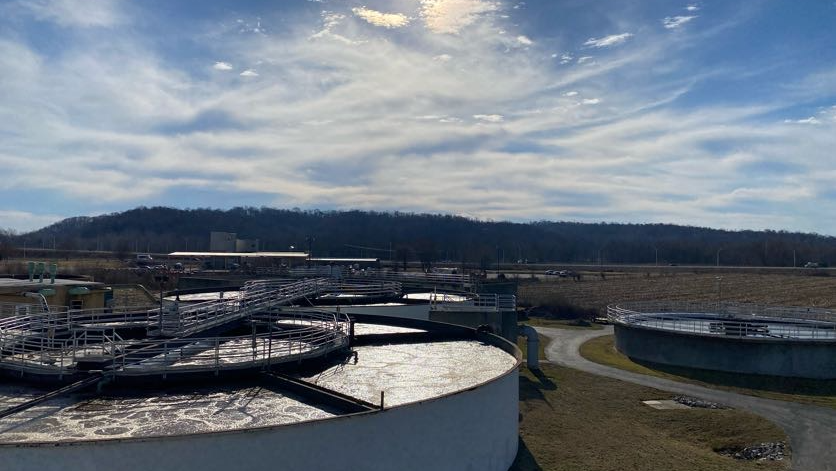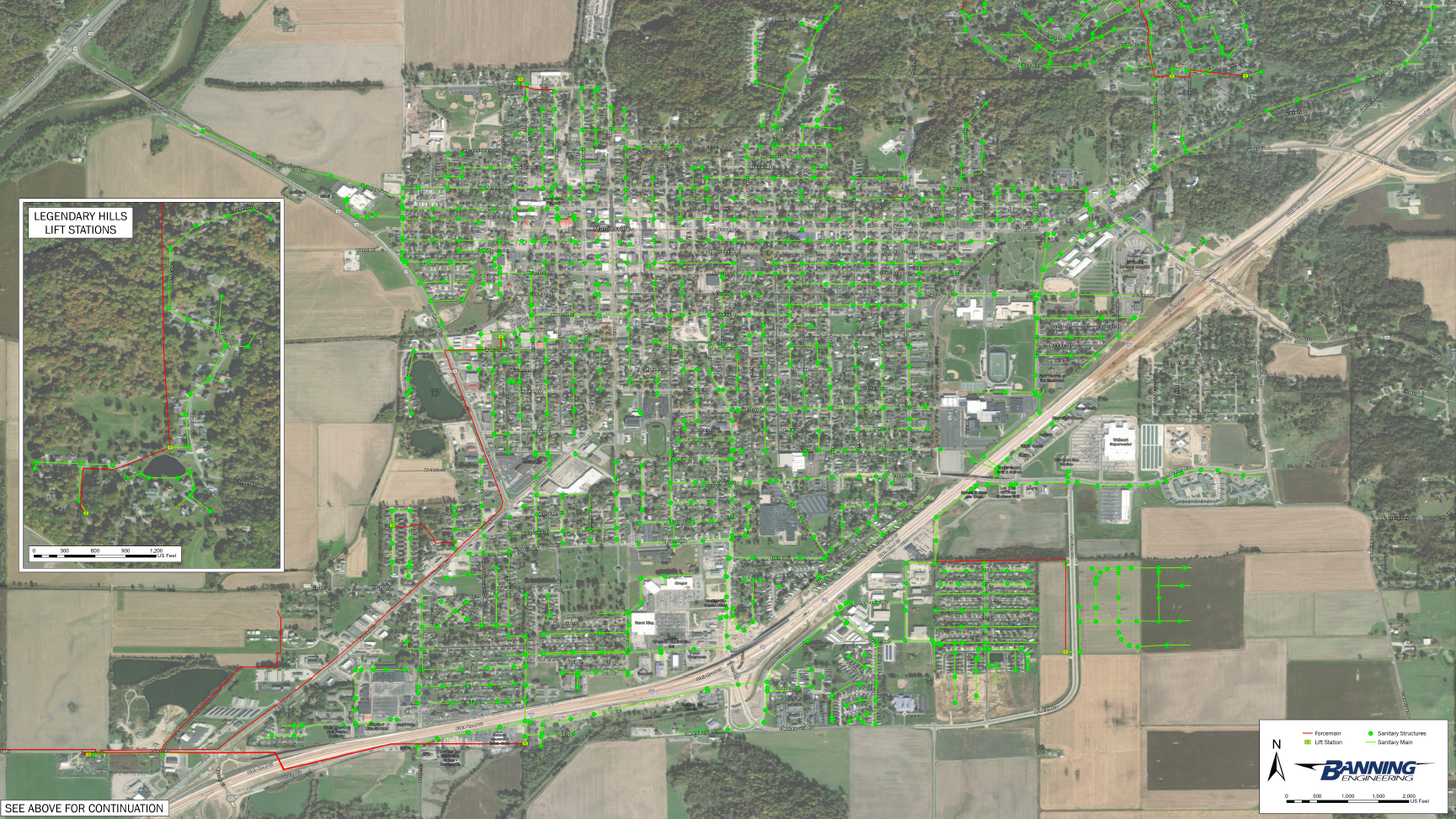Asset Management Planning
Know what you have. Protect what you’ve built. Plan for what’s next.
A new Indiana law, House Bill 1459, is about to change the way every water and wastewater utility in the state operates. Whether or not you fall under the Indiana Utility Regulatory Commission (IURC) today, this law affects you.
Starting January 1, 2026, all utilities will be required to submit an Asset Management Plan (AMP) to the IURC every four years—even those who have previously opted out of IURC jurisdiction.

House Bill 1459
Is Your Utility Ready?
What is HB1459?
In addition to the AMP requirement, HB1459 introduces new expectations for utility governing bodies. Starting January 1, 2027, utility board members must complete training every four years focused on:
- Best practices for developing and using Asset Management Plans
- Fiduciary duties specific to governing a utility
- Sound financial management principles for water and wastewater systems
- Compliance with applicable environmental regulations
This training must be provided by one of the following:
- The IURC
- The Drinking Water and Wastewater Infrastructure Research and Extension Program (authorized under IC 5-1.2-11.5-10)
- A statewide nonprofit organization that serves rural water or wastewater utilities
While the training requirement doesn’t go into effect until 2027, we expect further guidance on approved training programs and content in the near future.
Overall Requirements
- AMP submission to IURC every 4 years
- Applies to all water/wastewater utilities
- Training for board members (starting in 2027)
AMP Requirements
- A current system map
- An inventory and condition assessment of all system assets
- A plan for inspection, repair, and maintenance—including how it will be funded
- A review of water and energy conservation strategies
- A rate analysis to ensure customer rates support the AMP
- A financial audit every two years
- An annual Cyber Vulnerability Assessment
- Documentation of your utility’s technical, managerial, legal, and financial capacity to operate and maintain the system
- For small systems (1,000 customers or fewer), the IURC plans to offer a simplified version, but the requirements will still be substantial.
Start Preparing
The IURC is expected to release final requirements for Asset Management Plans (AMPs) by October 1, 2025. Until then, a practical starting point is to follow the Indiana Finance Authority’s (IFA) current AMP guidance, which has been in use for years as part of the State Revolving Fund (SRF) loan process. This existing framework is well-developed and widely accepted—and likely to serve as the foundation for the new statewide requirements.
The IFA offers both a comprehensive AMP manual and streamlined resources to help communities begin the process. The new legislation also mentions a simplified AMP option for utilities serving 1,000 customers or fewer, though we expect the core elements to remain consistent with IFA’s current standards.
What is an Asset Management Plan?
An Asset Management Plan (AMP) is a strategic planning document that helps utilities proactively manage their infrastructure. It provides a roadmap for maintaining, operating, and investing in utility assets, covering technical, managerial, financial, and legal aspects of system management.
Some AMPs are straightforward; others are more complex depending on the size and needs of the utility. But at their core, all AMPs are designed to ensure long-term sustainability, reliability, and regulatory compliance.

Enhance with GIS
No more buried valves. No more institutional memory walking out the door.
Take the guesswork out of utility management
At Banning Engineering, we help utilities move from reactive to strategic with custom GIS utility mapping services that lay the foundation for a strong Asset Management Plan (AMP).
Our high-precision, mobile-accessible digital maps empower you to:
- See every asset clearly—from hydrants to outfalls
- Track infrastructure condition and remaining life
- Streamline field work with real-time access via phone, tablet, or computer
- Protect institutional knowledge and simplify training and transitions
- Strengthen funding and compliance efforts with reliable data
- Whether you’re managing a water, sanitary, or stormwater system, GIS-integrated AMPs let you visualize, assess, and plan with confidence.
We Map What Matters
Water Systems
- Hydrants
- Valves
- Water meter pits
- Booster stations
- Water mains
- Treatment plants
Sanitary Systems
- Manholes
- Lift stations
- Gravity mains
- Force mains
- Wastewater treatment
Stormwater Systems
- Inlets
- Outfalls
- Catch basins
- Quality units
- Storm piping
- Erosion controls
FAQs
What is the IURC?
The Indiana Utility Regulatory Commission (IURC) is an administrative agency that hears evidence in cases filed before it and makes decisions based on the presented evidence. An advocate of neither the public nor the utilities, the Commission is required by state statute to make decisions in the public interest to ensure the utilities provide safe and reliable service at fair and reasonable rates.
What is House Enrolled Act No. 1459?
HEA 1459 is a law passed in the 2025 legislative session that requires non-regulated and regulated water and wastewater utilities to submit a report to the IURC every 4 years regarding the status of their utility asset management program.
Does this affect my utility?
The answer is most likely yes. This legislation requires all water and wastewater utilities to submit the reporting. If your utility is not listed on the regulated utility list provided by the IURC, then you are affected by HEA 1459. See Attachment A.
How is a utility defined as public?
HEA 1459 defines a public utility as any not-for-profit, municipal-owned, conservancy district or regional district that provides water or wastewater service to the public in Indiana for compensation and is not already under the jurisdiction of the IURC.
At the basic level, if your utility sells service to another entity then you most likely qualify as a public utility. An example of this is if a local homeowners association owned a package treatment plant and sells wastewater service to the adjoining property owner.
What is the difference between regulated and non-regulated utilities?
For-profit and other large utilities are regulated through the IURC; however, many municipal and local utilities choose to “opt-out” for local governance. Non-regulated utilities can issue debt, change rates, and run capital construction projects without state-level oversight.
When is the report due?
The legislation does not specify a due date. However, it will be no later than 4 years after January 1, 2026. More information will become available on or before October 1 2025 though a general administrative order.
What happens if I ignore HEA 1459?
The legislation states that if the IURC does not receive documentation that you are demonstrating a good faith effort to comply, they have the authority to assert jurisdiction over the utility and can put the utility into receivership proceedings. Before this occurs, there is a process of 3 deficiency notices with varying timeframes allotted for addressing the concerns.
What do I need to submit?
Your utility needs to submit a report that demonstrates your efforts to implement an asset management program generally following the guidelines from the Indiana Finance Authority (IFA) State Revolving Fund (SRF) loan program. In addition, you need to show that your utility completes additional training every 4 years.
What is an Asset Management Plan (AMP)?
An asset management plan (AMP) is a written strategy to manage your utility’s assets to optimize long–term performance. This is broken into three areas, Technical, Managerial, and Financial. IFA provides a checklist, which is anticipated to be similar to the guidance expected in October.




